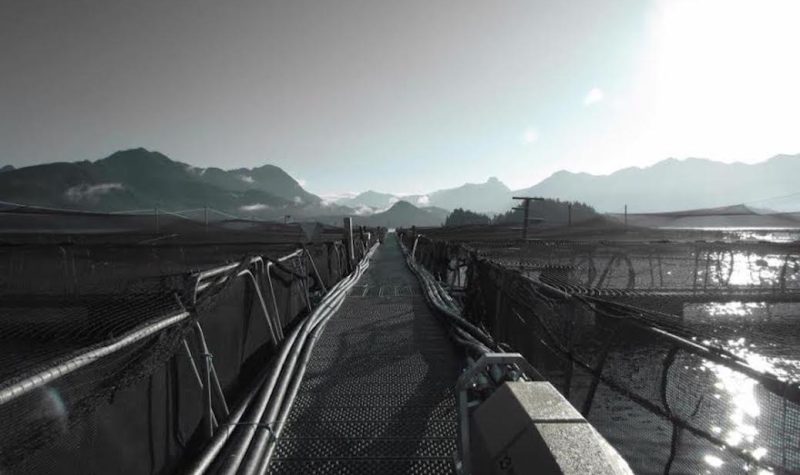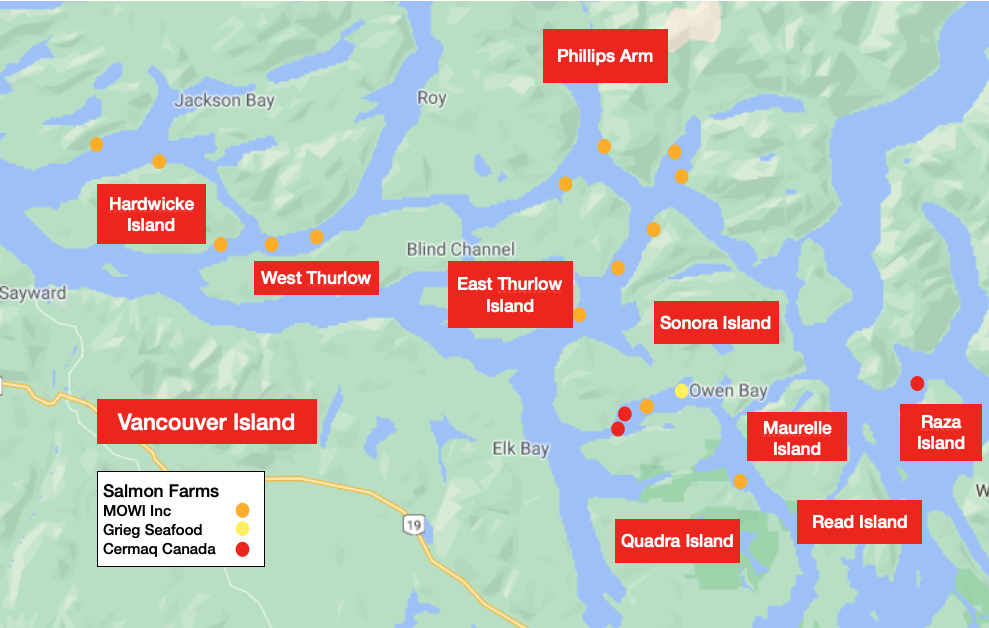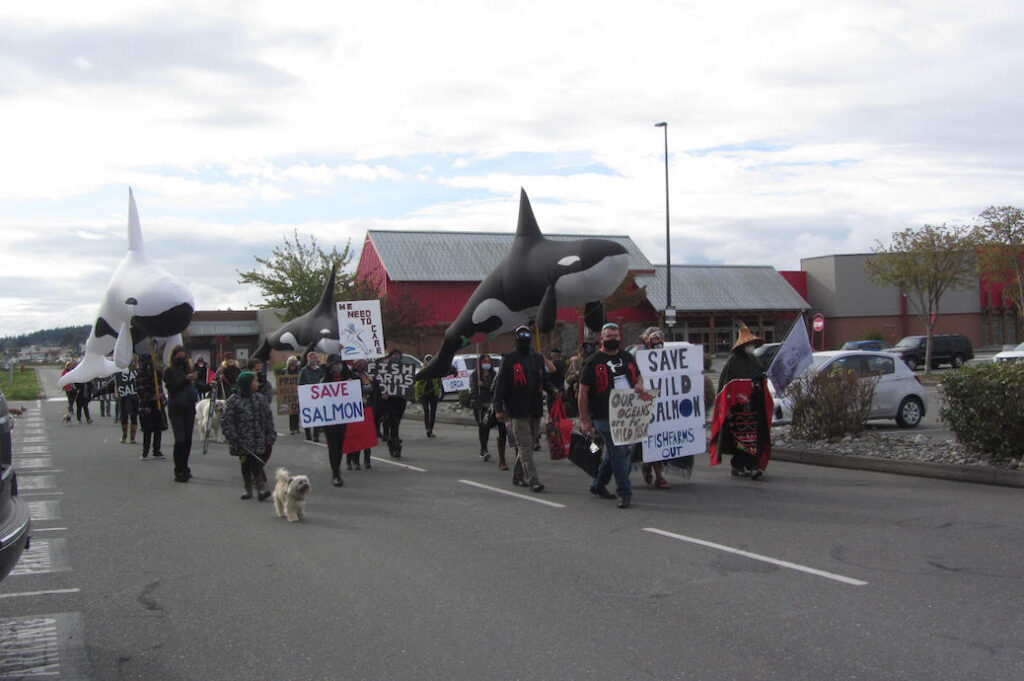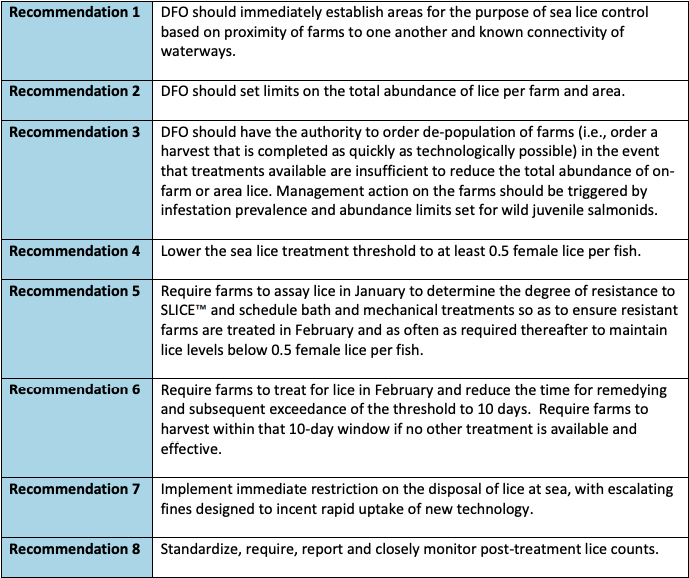By Roy L Hales
Two months have passed since Fisheries and Oceans Canada’s (DFO) announced that “nine peer-reviewed, scientific risk assessments” find that salmon farms pose a ‘minimal risk’ to salmon migrating through the Discovery Islands. This finding is important because the Canadian Government has until Dec. 18 to decide whether to renew the licenses of the 18 fish farms operating in that region.
“All the federal licenses of the salmon farms operating in the Discovery Islands are set to expire on December 18th. I’m really not sure how that lined up because its not the case for the rest of the coast, but it is for these 18 farms. You know, that’s a fifth of the industry," independent biologist Alexandra Morton explained.
Research funded by the industry
In a recent interview with The Globe and Mail, Dr. Kristi Miller-Saunders, head of the department’s molecular genetics laboratory at the Pacific Biological Station in Nanaimo, expressed concerns about the fact DFO is relying on studies that were funded by industry. Miller-Saunders said this leads scientists to “only asking the research questions that the industry agrees with.”
Jay Parsons, director of Aquaculture, Biotechnology and Aquatic Animal Health at DFO, insists that DFO researchers “independently undertake the research and that research is public and it is published and it is made available to the scientific community.”
Why not sea lice?
Some scientists ask why sea lice were not among the problems that needed to assessed, in connection to the Salmon farms having their licenses renewed.
Morton explained, “For some reason DFO, while they provided evidence on nine pathogens that are associated with salmon farms … they completely omitted sea lice – the most obvious, the best studied and probably the greatest impact on juvenile wild salmon that are trying to get past these farms."
Cortes Currents asked the DFO about this omission.
“The completion of ten risk assessments was not a specific recommendation of the Cohen Commission,” was the answer.
Fisheries and Oceans Canada set the permissible limit at three lice per fish between March 1 and June 30, when wild salmon migrate out to sea.
Cermaq Canada's response
Cermaq Canada is one of the three salmon farm companies in the Discovery Islands.
While they were not able to respond in time for this article, Cortes Currents had previously interviewed their Communications and Engagement Manager, Amy Jonsson.
She explained , “this limit was set by DFO science based on risk assessment and potential risk to wild salmon.”
David Kiemele, managing Director of Cermaq Canada, added that, “the higher the number of sea lice in the ecosystem, the more frequently we will need to treat our farms. Sea lice numbers can fluctuate depending on several factors such as water temperature, salinity and the in migration of wild salmon. Once lice enter our farms, as with any farmed animal, the parasites can undergo an amplification effect. Because of these dynamics, we monitor lice levels on a weekly basis and plan to treat the farms when lice levels are seen to be increasing.”
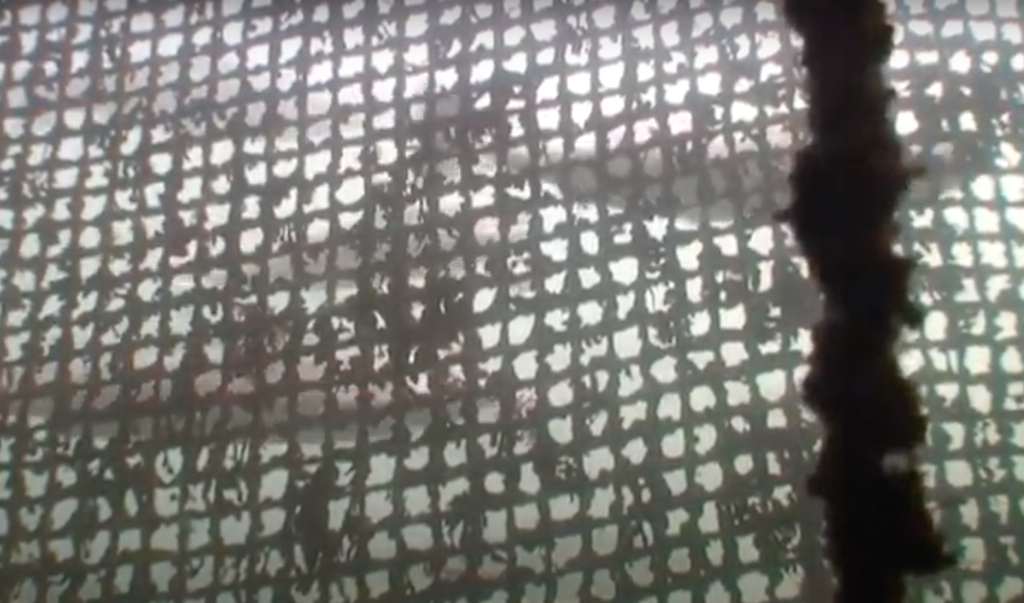
Screenshot looking through the net of a salmon farm. Photo courtesy of a DFO video Aquaculture Research: Alternative Control Methods for Managing Sea Lice.
Sea lice in the Broughton
Morton does not believe the industry explanation is sufficient, “In the Broughton Archipelago, where the [First] Nations are telling the industry what to do, they all kept their lice under control last spring. The industry posts their sea lice numbers on their websites. About fifteen years ago the province said, ‘Look, you guys can have three lice per fish and after that you have to deal with them.’ So in the Broughton, they kept it under. Everywhere else, they went over, including the Discovery Islands where 50 per cent of the farms went over."
“The problem that the salmon farms are facing, which has become all of our problem now, is that the sea lice have become resistant to the wonder drug, called Slice, that really worked," she added.
Cermaq defends its methods
Kiemele disagreed with this assessment of slice, “In some circumstances, we have treated our farms for a second time within weeks, and the reason is not connected to the efficacy of the treatment."
He claims that more treatments were needed because of sea lice in the surrounding environment.
Kiemele added that, to varying degrees, his company is implementing six of the eight recommendations made against the industry in the ‘Lousy Choices’ report.
“The remaining two recommendations – Recommendation 2: DFO should set limits on the total abundance of lice per farm and area; and Recommendation 4: Lower the sea lice treatment threshold to at least 0.5 female lice per fish – are complex due to the interpretation of risk and regional and seasonal variables, and both conversations being held within several industry, stakeholder, rights holders, and government working groups in which Cermaq is participating," he said.
When more than three lice per fish are found at a salmon farm, they are currently given 42 days to clean up. Some critics suggest this should be changed to 10 days.
Kiemele wrote that his company is already implementing this clean up procedure.
“As part of our new Conditions of License (March 1st 2020), there is an increased monitoring and management requirement in February to ensure that farms are below the threshold going into the outmigration period," he added.
Consulting with First Nations
DFO announced that prior to making a final decision, they must consult with seven First Nations from the Discovery Islands. Four of these — the Holmalco, Klahoose, K’omoks and Tla’amin — are among the more than 100 First Nations that signed a joint letter supporting the transition to closed containment system. Two of the others, the We Wai Kai and Wei Wai Kum First Nations, have voiced their opposition to fish farms on numerous occasions.
It is being reported that the mayors of Campbell River, Port Hardy, Port McNeill and Gold River are asking to be included in the government consultation.
Links of Interest:
- (Cortes Currents) articles about, or referring to, salmon farms in the Discovery Islands
- (Wild First) First Nations Support for Transition to Closed Containment
- (Cortes Currents) A closer look at sea lice on 15 salmon farms
- (DFO) Industry sea lice counts at BC marine finfish aquaculture sites
- (Globe and Mail) Scientist at Department of Fisheries and Oceans says Ottawa is too beholden to fish farm industry
- (Cortes Currents) The DFO responds to questions about Minimal risk
- (DFO) Summaries of the risk assessments for the Discovery Islands area
- (Cortes Currents) articles, pro and con, about salmon farms


